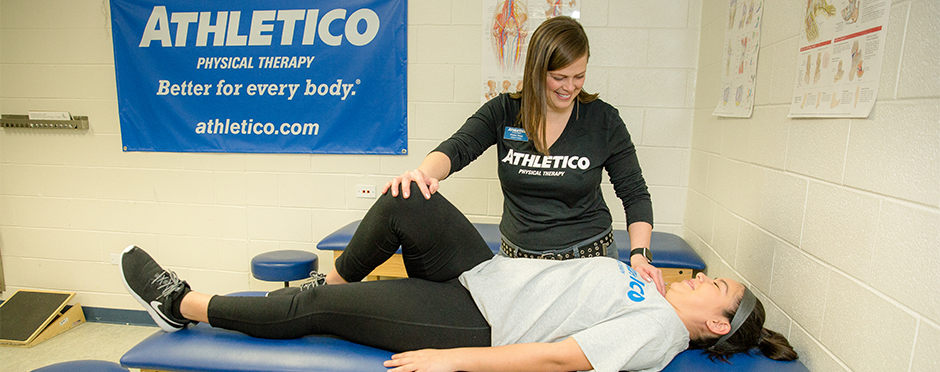
ACL Injury Prevention in Female Athletes
Leave a CommentIf you have played sports for any length of time, you more than likely know of someone who has had an anterior cruciate ligament (ACL) injury, or have experienced one yourself. Statistically, females have a 4-6 times greater likelihood of an ACL injury than males participating in the same sport.1 These injuries can significantly contribute to the overall cost of healthcare in the US, with data showing that ACL injury costs are approaching $1 billion to $3 billion a year in treatment and management.2
Not only are ACL injuries contributing a significant portion to the cost of healthcare, these injuries are taking athletes off the field and away from the activities they love. The need for healthcare professionals, and specifically physical therapy, to reduce the incident of ACL injuries through prevention can’t be overstated. One foundation of ACL prevention is addressing an athlete’s neuromuscular control. Let’s take a few moments to talk about what neuromuscular control is and how it can help prevent ACL injuries.
Neuromuscular Control
Neuromuscular control is a trained response for dynamic stability of a joint. This is more commonly referred to as “muscle memory,” and it combines several different responses such as muscle strength, coordinated muscle firing and balance.
As the name suggests, neuromuscular control is a combination of your neurological system with your muscular system to produce efficient, stable and safe movement. While neuromuscular control incorporates an aspect of strength, it is not entirely about strength. Being strong in particular muscles is important, but it’s also important to be able to use groups of muscles in a properly coordinated manner. If muscle groups are not working together as a team and not contracting at the appropriate time during a movement, poor alignment of the lower extremities may still occur, particularly at the knees. When poor lower extremity alignment occurs during sporting activities, this places the athletes at risk for injury.
ACL Injury Prevention
Female athletes who have poor neuromuscular control, in other words difficulty controlling their lower extremity alignment during functional activities, have an increased risk of experiencing an ACL injury during competition.1 Female athletes with poor neuromuscular control have been shown to have a greater tendency to allow their knee to collapse in toward the other knee during sporting activities.1 When this occurs the athlete is at increased risk of an ACL injury.
To help prevent ACL injuries from occurring, Athletico offers the ACL 3P Program. Through this program, ACL 3P specialists are able to test and identify athletes that may have poor neuromuscular control. This is done with a comprehensive screening process to identify any deficits an athlete may have. This screening process can also be customized to the athlete’s particular sport in order to more accurately assess the athlete’s neuromuscular control within their sport’s particular demands. Once an at-risk athlete has been identified, a personalized plan is created to address the athlete’s needs. Neuromuscular training has been shown to produce positive changes in the lower extremitiy biomechanics for female athletes, leading to reduced injuries.
Staying in the Game
Although it is impossible to prevent all injuries, Athletico’s ACL 3P program can help athletes be confident in the steps they have taken to reduce the risk of injury so that they can stay in the game.
If you are interested in learning more about Athletico’s ACL 3P Program, including ACL risk assessment, please email ACL@athletico.com.
The Athletico blog is an educational resource written by Athletico employees. Athletico bloggers are licensed professionals who abide by the code of ethics outlined by their respective professional associations. The content published in blog posts represents the opinion of the individual author based on their expertise and experience. The content provided in this blog is for informational purposes only, does not constitute medical advice and should not be relied on for making personal health decisions.
References
- Hewitt T.E., Myer G.D., Ford K.R. Biomechanical Measures of Neuromuscular Control and Valgus loading of the knee Predict Anterior Cruciate Ligament Injury Risk in Females Athletes, The American Journal of Sports Medicine. 2005; 33(4), 492-501
- Frank B.S., Gilsdorf C.M., Goerger B.M., Prentice W.E., Padua D.A., Neuromuscular Fatigue Alters Postural Control and Sagittal Plan Hip Biomechanics in Active Females with Anterior Cruciate Ligament Reconstruction. 2014, American Orthopaedic Society for Sports Medicine. 2014; 301-308.
